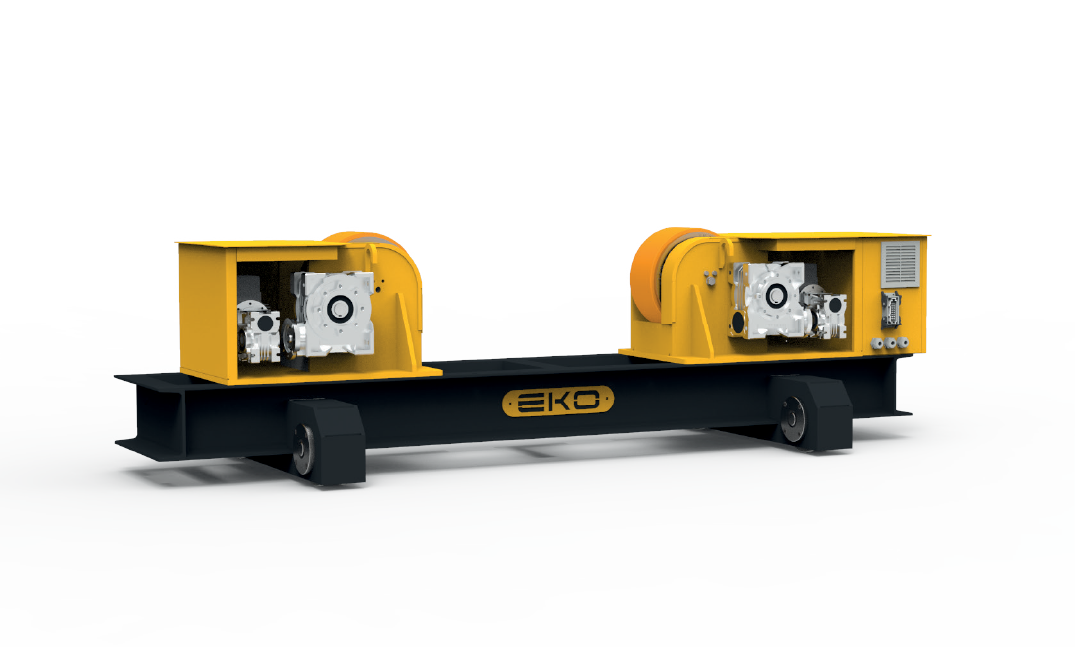Conventional rotator systems are mechanical systems that rotate cylindrical workpieces during welding, assembly and grinding processes. These systems are designed for workpieces that do not change in diameter or work in a fixed range and have a manually adjustable wheel structure.
The operator adjusts the distance between the wheels in accordance with the diameter of the workpiece and adapts the rotator system. These systems enable the rotation of pipes, tanks, pressure vessels and large metal cylinders, making welding processes more precise and stable.
Conventional rotator systems have a high carrying capacity and are generally used in heavy industrial applications. Steel or polyurethane-coated wheels provide a stable and vibration-free rotation without damaging the surface of the workpieces. The precise speed control mechanism and digital speed display allows the operator to adjust the rotation speed of the workpiece. The system can also be easily managed by remote control or manual control via the panel.
It can be integrated with conventional rotators, automation systems and column boom systems, resulting in a more efficient and safer workflow on production lines. It offers a long service life thanks to its low maintenance requirement and durable body structure.
Widely used in industrial production in areas such as pipe production, shipbuilding, metal cylinder welding and pressure vessel manufacturing, these systems are a welding support equipment that offers significant advantages in terms of precision, durability and work safety.













